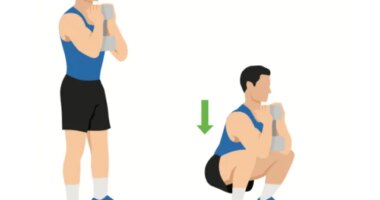
Signs of arthritis can come and go, varying in intensity; for many people, the condition can become more painful as the years go by. Severe arthritis can lead to chronic pain and disability. An early diagnosis – confirmed by your doctor – can help to preserve joint function, mobility, and quality of life. This is because management of the condition can begin, which may involve exercise, weight loss, and medication.
When should I go to see the doctor?
The Centres for Disease Control and Prevention (CDC) said: “Talk to your doctor if you have arthritis symptoms such as pain, stiffness, or swelling in or around one or more of your joints.”
Risk factors for developing arthritis
Being overweight puts more stress on the joints, especially in the hips and knees.
Meanwhile, microbial agents – such as bacteria and viruses – can infect the joint and potentiality cause some forms of arthritis.
Furthermore, any joint injuries can damage a joint, increasing the likelihood of osteoarthritis – the most common form of arthritis in the UK.
READ MORE: How to lower cholesterol – 5 foods for lower cholesterol and a happy heart
“Joint-friendly physical activities are low-impact, which means they put less stress on the body, reducing the risk of injury,” the CDC said.
Remaining physically active can delay the onset of arthritis-related disability.
The CDC recommend the “SMART” way to safely exercise with arthritis.
READ RELATED: Bubonic plague warning: China confirms deadly infection – symptoms you must know
- S – start low, go slow.
- M – modify activity when arthritis symptoms increase, try to stay active.
- A – activities should be “joint friendly”.
- R – recognise safe places and ways to be active.
- T – talk to a health professional or certified exercise specialist.
People with arthritis may have “good” and “bad” days, depending on the severity of their joint pain, stiffness, and feelings of fatigue.
The SMART technique is to modify activity levels when you’re experiencing a “bad” day.
For “major health benefits”, aim for 150 minutes of activity each week.
The CDC also advise yo do “muscle-strengthening exercises” twice weekly. This can include:
- Lifting weight
- Working with resistance bands
- Yoga.
“Flexibility exercises like stretching and yoga are also important for people with arthritis,” said the CDC.
Daily flexibility exercises helps people with arthritis to maintain a range of motion.
This enables you to continue doing everyday tasks, such as household chores, hobbies, and visiting family and friends.
Any pain that lingers two hours after exercise, or gets worse at night, could be a sign that you’ve overdone it.
Source: Daily Express










